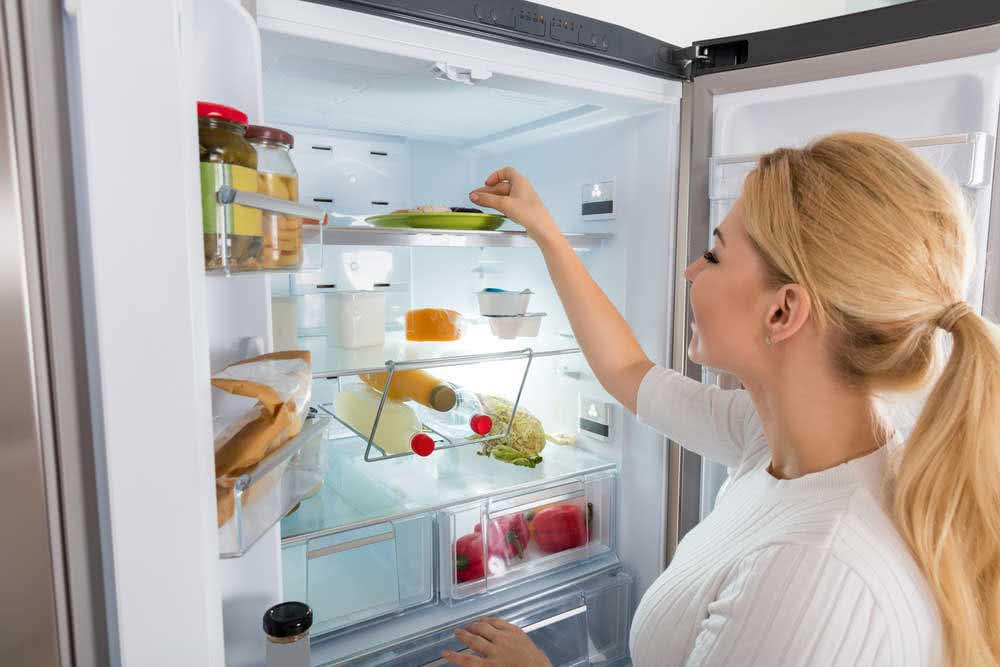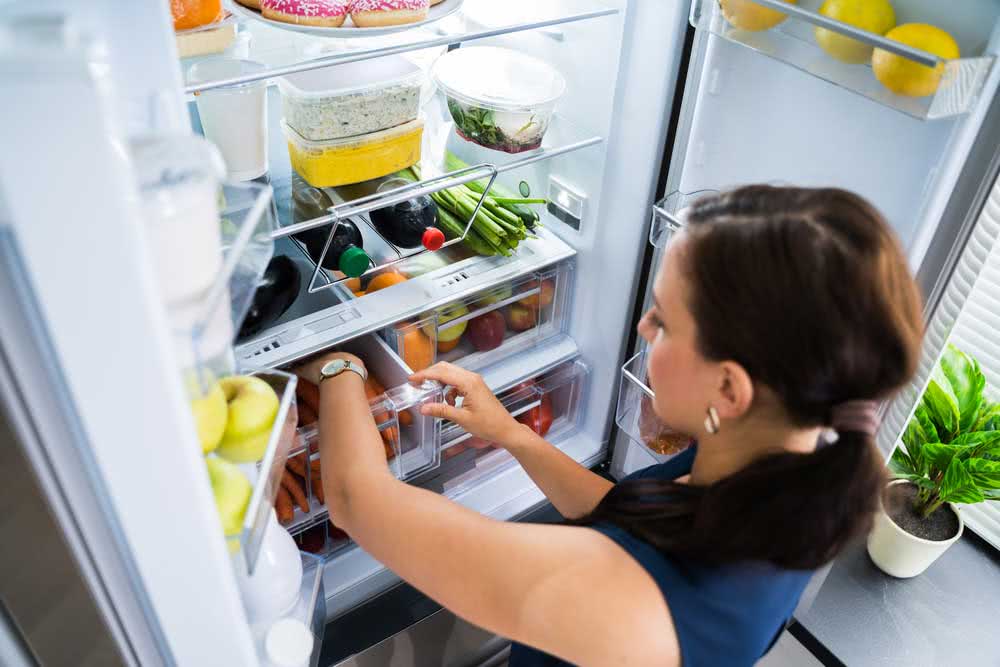What is the use of a refrigerator if not for freezing? Yeah! And when the refrigerator doesn’t freeze it obviously loses its main function. But that doesn’t mean you should get rid of the appliance, at least not yet.
There are several reasons why a refrigerator will not freeze and many of them can be easily fixed by yourself without the need for a service professional.
That’s why we invite you to follow in this post what to do when the fridge doesn’t freeze and how you can get rid of this problem. Come and see!
Refrigerator does not freeze: main causes and what to do

1. Bad contact at the outlet
It may sound silly, but believe me: a plug that is not properly plugged into the outlet may be the reason behind your refrigerator not being freezing properly.
The solution? Just connect the plug the right way. Take advantage and check that there are not many electrodes connected to the same outlet.
It is common to use benjamins and adapters capable of connecting three to four electrical devices at the same time and this can cause an overload in the electrical network or cause the electrodes to simply stop working as expected.
2. Door open
Another silly reason that may be preventing your refrigerator from working is the poor closing of the door. The interior of the refrigerator cannot come into contact with the ambient air, this causes it to stop freezing.
The solution you must already imagine: just close the door correctly. Sometimes a misplaced bottle or the vegetable drawer that is not properly attached can be hindering the door to close. So, before calling for technical assistance, it is worth noting this small but relevant detail.
3. Inadequate temperature
Inadequate temperature is one of the biggest reasons that may be causing your refrigerator to stop freezing.
The math behind this story is simple: the more food stored in the refrigerator the colder it must be, that is, the refrigerator thermostat must be regulated so that the cold air circulates evenly inside the refrigerator.
What happens most of the time is the false idea that the less the refrigerator cools the more it will save energy. But this is not true, especially when it is full, since the engine will have to work harder to keep the internal space cool.
The temperature of the external environment also interferes with this aspect. On very hot days, the refrigerator’s internal temperature must be reduced, unlike winter, when the appliance’s thermometer can be adjusted to slightly higher temperatures.
4. Worn rubber
The sealing rubber may also be among the reasons your refrigerator is not freezing. Over time it is natural that this rubber will wear out, dry out and even release from the door.
This makes it easy for the air to escape and, at the same time, the outside air to enter the refrigerator, preventing it from cooling.
The solution for this case is also simple and requires only the replacement of the sealing rubber. Before buying the rubber check the right model of your refrigerator.
You can do this on your own, as the replacement process is simple, but if you prefer, call for service.
5. Dirty condenser
Some refrigerator models, especially the older ones, have the condenser on the back of the appliance, just behind the grill. The condenser, similar to tubes, is responsible for distributing gas from the refrigerator causing it to cool.
But if these tubes are blocked by the accumulation of dust or by objects, such as cloths, for example, the distribution of gas is impaired and this can prevent the refrigerator from freezing.
To solve this problem, unclog the condenser and clean it periodically with a clean cloth slightly moistened with water to prevent the accumulation of dust to prevent the appliance from freezing.
6. Thermostat
Have you checked that the refrigerator thermostat is working properly? The thermostat regulates the temperature and if it is defective, your refrigerator can also stop freezing, since the temperature change will not happen properly.
Make sure it is set at the right temperature for your refrigerator first. If everything is ok and the appliance still does not freeze, it may be that the thermostat is burned out or, by some sudden movement or change of place, the wire has broken.
In such cases the most recommended is to resort to technical assistance to assess the problem.
7. Burnt resistance
Every refrigerator has a cold plate that is activated when the condenser turns off. This plate prevents the formation of ice crusts inside the appliance. However, when the resistance inside it burns, this process is interrupted, making the air exchange between the interior and the exterior not happen and, thus, the refrigerator stops freezing.
The solution is to change the resistance, but for this it is important to count on technical assistance.
Refrigerator does not freeze the bottom: causes and solutions

1. Leak of gas
Another very common thing to happen is that the refrigerator stops working only at the bottom. Most of the time this problem is generated by the gas leak from the device.
This is because the gas travels through the refrigerator from top to bottom and when there is a leak this flow is interrupted and the bottom of the appliance suffers from the loss of cooling.
This type of repair can only be done with technical assistance.
2. Dirty filter
If the problem is not with the gas leak, then the cause is probably the dirty filter. When cleaning is not performed as often as necessary, the filter clogs, the gas stops circulating throughout the appliance and, again, the bottom of the refrigerator suffers.
In these cases, the solution is also to call for technical assistance.
3. Take care of your refrigerator and avoid problems in the future
Everyone knows that prevention is the best medicine, right? So, before you even think about having problems with your refrigerator, see what you can do to take better care of it and ensure long life for the appliance.
4. Adjust the temperature
It is very important to know how to regulate the temperature of the refrigerator according to the amount of food in it. The fuller, the colder the temperature must be. The same goes for the freezer.
The idea is that cold air will be able to circulate throughout the internal space of the device without difficulties. And don’t worry, this will not increase your electricity bill, on the contrary, by regulating the correct temperature you avoid “forcing” the device too much, and then increase energy consumption.
5. Open the door only when necessary
Refrigerator is not a showcase! Therefore, open it only when necessary. No stopping looking at the refrigerator while thinking about life. In addition to reducing the cooling capacity of the device, you still spend more energy.
6. Do the cleaning recommended by the manufacturer

For each refrigerator there is a correct way of cleaning and these recommendations can be found in the manufacturer’s manual.
There it is possible to know the most suitable frequency for cleaning, how to clean the refrigerator and the general care that is necessary to keep the appliance working properly.
Remembering that it is not just inside that the refrigerator needs to be cleaned. Condensation tubes and air filters must also be periodically cleaned.
It is also worth mentioning that the obstruction of the air passages in the refrigerator is harmful and can compromise the cooling efficiency of the appliance. Therefore, that idea of drying clothes on the back grill of the refrigerator can cause losses in the future, better avoided.



